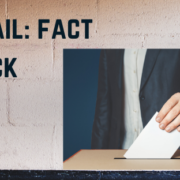The Status of the Next Stimulus Package
The situation in the US is dire across all fronts. From public health to the economy, hard working everyday Americans are suffering as COVID-19 spreads unchecked and cases reach new daily highs and workers and businesses desperate to support themselves place themselves in dangerous conditions to try to make ends meet.
The CARES Act was a bandaid without the necessary infrastructure to effectively distribute aid. Riddled with loopholes that diverted what should have been funds for small businesses and struggling citizens to big business and the top income earners, the provisions that allow recipients to tread water are coming to an end. The unemployment expansion only runs through July, small business loans that didn’t cover costs to begin with are dwindling as the pandemic continues with no end in sight and a renters’ crisis with mass evictions is set to devastate upwards of 23 million inhabitants throughout the country when eviction freezes expire.
And that’s just the beginning.
Over 44 million Americans have filed for unemployment. Many have not yet received anything from the outdated and overburdened unemployment systems or their $1200 stimulus checks, for that matter. Businesses have reopened and then been forced to close and then reopen in a macabre cycle as servers get sick while states stubbornly refuse to go back into a lockdown.
But how can you go into lockdown when the government won’t financially support its citizens during a crisis? These are our tax dollars that are given freely to corporations as we are beaten over the head with disdain and accusations of handouts and laziness.
The HEROES Act passed the House but is dead in the Senate. And while Trump is supportive of another stimulus check, the leadership in the Senate isn’t convinced and refuses to even begin discussions for a second stimulus bill until sometime in July. And when they do finally get around to doing the job that we, as American citizens, pay them to do, Mitch McConnell doesn’t want anything passed that has more than $1 trillion in aid and is requiring a provision that ensures this next stimulus bill is the last–a dangerous and potentially catastrophic proposal as we deal with a crisis made infinitely worse by lack of competent government intervention and that has no end in sight.
Many representatives have advocated for actual solutions; $2,000 a month for households until the end of the crisis proposed by both Senator Kamala Harris and Representative Ro Khanna. The HEROES Act has options for debt relief, student loan relief, hazard pay, housing and food assistance. It extends the unemployment expansion for another 6 months and gives much needed funding to local governments. It’s a good start, better than the CARES Act, but even if it passes (which looks extremely unlikely given some leaders’ reluctance to come to their country’s aid), the first stimulus bill showed us how poorly managed the implementation and roll out of these programs are. What does a second stimulus check matter if you never got the first?
Clearly, there is much work to be done and endless obstacles. As America teeters on the brink of systemic collapse, let us hope our lawmakers see that their self-preservation is tied to our own. We all go down with this ship.
Yours in Strength,
The Take Back Control Team










